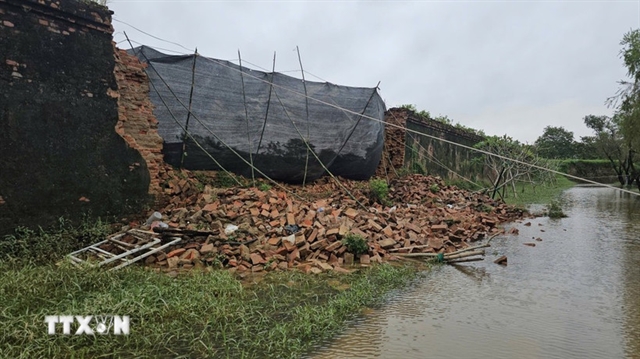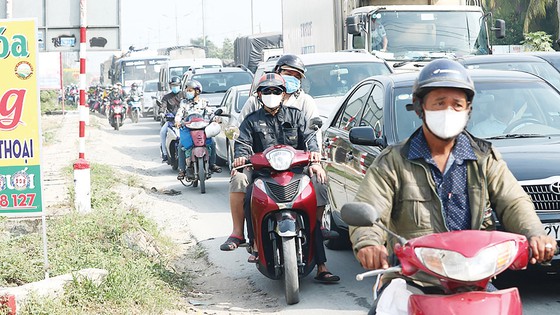 Society
Society


|
| Traffic jams often occur on the National Highway No.1 section between HCM City and Cần Thơ. — Photo courtesy of sggp.org.vn |
HCM CITY — Early construction of a high-speed railway between HCM City and Cần Thơ is expected to spur inter-regional development.
Passenger and freight transport in the Mekong Delta currently exists mainly on roads, with only a small portion using waterways and aviation.
The number of newly built roads in the region is relatively low compared to other regions.
The lack of large-volume transport is increasing logistics costs for agricultural and aquatic products, and has negatively affected HCM City, the economic hub of the southern region.
Multi-purpose project
According to the Ministry of Transport, despite having the largest river and canal system in the country, the Mekong Delta has transported goods such as rice, fertiliser and gasoline, among others, "without speed".
Fresh produce such as seafood and fruit are usually transported by refrigerated vehicles or container trucks to preserve quality.
This explains why road freight now accounts for more than 70 per cent of the region's transport needs and is always overloaded.
Among the modes of transport, road freight usually has the highest cost because of the large volume of transport, resulting in high logistics cost for Vietnamese goods compared to average costs in other parts of the world.
Currently, Việt Nam’s logistics costs account for about 20 per cent of GDP, while the world’s average is about 11 per cent of GDP.
Transport costs account for the highest, with nearly 60 per cent of the total logistics costs.
Developing large-volume transport in the Mekong Delta will help reduce logistics costs and increase Vietnamese goods’ competitiveness. The HCM City - Cần Thơ high-speed railway project, which has been assigned to the Railway Project Management board for a pre-feasibility study report, is the top candidate for this plan.
According to many economic experts, investment in the high-speed railway should be a number one priority because when completed it will solve the problem of logistics costs for agricultural products, one of the country's export strengths.
The high-speed railway between HCM City and Cần Thơ is designed with a passenger speed of 200km/h and 120km/h for cargo transport.
At this speed, people in the Southwest region, especially from the Cần Thơ area, can travel to HCM City for work and return home on the same day, reducing the population in HCM City.
Financial costs
The biggest obstacle is the large investment capital needed, estimated at US10 billion, of which the cost of railway construction is US5 billion.
The four localities in which the project pass through have noted that the stations importantly cross urban areas of hundreds of hectares. Effective exploitation of the land along the station will create a great financial source for construction of the railway line.
According to the design recently approved by the Ministry of Transport, the railway will be almost parallel to the HCM City - Trung Lương - Cần Thơ Expressway.
The whole route will be 135km long and 1,435mm wide and pass through HCM City, Long An, Tiền Giang and Cần Thơ.
Tân Kiên in Bình Chánh District will be the first station, built in HCM City, connecting to a newly built modern urban area and bus rapid transit (BRT) along Võ Văn Kiệt Street, which is currently under construction.
The next station will be located in Bến Lức Town in Long An Province. From this station, there will be road or waterway connections to Long An International Port and Soài Rạp International Port in HCM City.
The province will have another station in Tân An, which will help form the new Tân An urban area with 300ha of land.
The fourth station will be in Phước Lập Commune in Tân Phước District in Tiền Giang Province, while the last will be located near Cái Cui Seaport in Cần Thơ.
Many experts have praised the project, saying it will create new urban centres and stations along the route, and will be a great driving force for urban development in the Mekong Delta. — VNS




